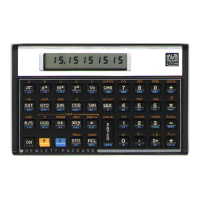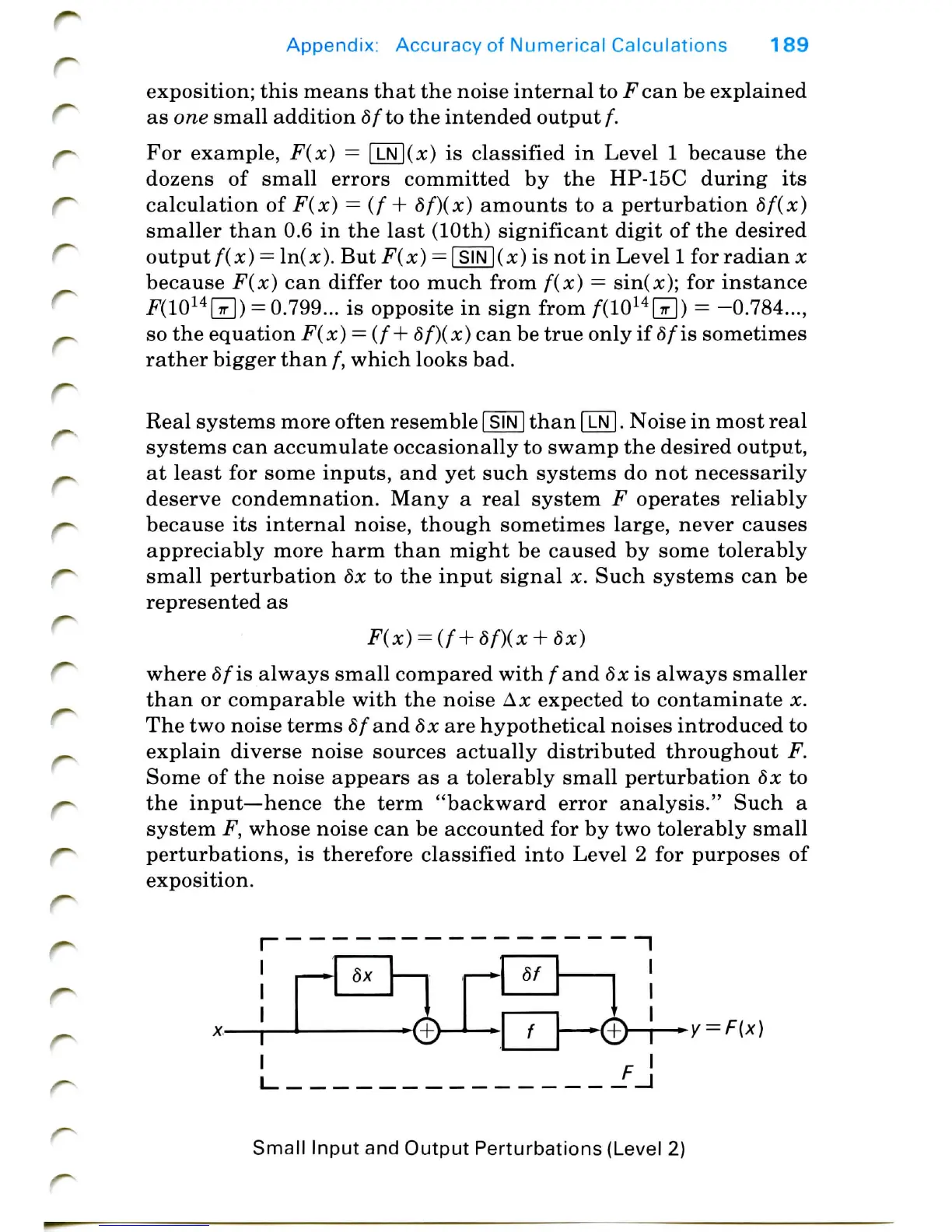Appendix:
Accuracy
of
Numerical
Calculations
189
exposition;
this
means
that
the
noise internal
to
.Fcan
be
explained
as one
small addition
5/to
the
intended
output/.
For
example, F(x)
— \N
\(x)
is
classified
in
Level
1
because
the
dozens
of
small errors committed
by the
HP-15C during
its
calculation
of
F(x)
= (/ +
<5/)(x)
amounts
to a
perturbation
5/(x)
smaller
than
0.6 in the
last
(10th) significant digit
of the
desired
output
f(x)
=
\n(x).
ButF(x)
=
|SIN|(3c)
is not in
Level
1 for
radian*
because
F(x)
can
differ
too
much
from
f(x)
=
sin(x);
for
instance
^(1014H)
=
0.799...
is
opposite
in
sign
from/(1014H)
=
-0.784...,
so
the
equation F(x)
= (/ +
df)(x)can
be
true only
if
<5/is
sometimes
rather bigger
than
f,
which looks bad.
Real systems more
often
resemble
|SIN|
than
|
LN|
.
Noise
in
most real
systems
can
accumulate occasionally
to
swamp
the
desired output,
at
least
for
some inputs,
and yet
such systems
do not
necessarily
deserve
condemnation. Many
a
real system
F
operates reliably
because
its
internal noise, though sometimes large, never causes
appreciably
more harm
than
might
be
caused
by
some tolerably
small perturbation
5x to the
input signal
x.
Such systems
can be
represented
as
where
5/is always small compared with
/and
8x is
always smaller
than
or
comparable with
the
noise
A*
expected
to
contaminate
x.
The two
noise terms
5/and
dx are
hypothetical noises introduced
to
explain diverse noise sources actually distributed throughout
F.
Some
of the
noise appears
as a
tolerably small perturbation
dx to
the
input—
hence
the
term "backward error
analysis."
Such
a
system
F,
whose noise
can be
accounted
for by two
tolerably small
perturbations,
is
therefore classified into Level
2 for
purposes
of
exposition.
1
1
1
dx
+f
=
F(x)
Small
Input
and
Output Perturbations (Level
2)

